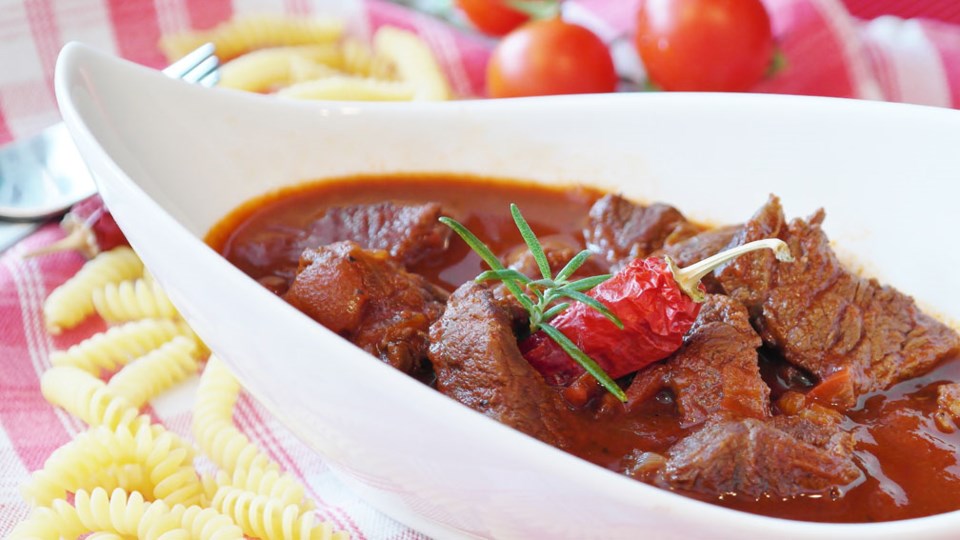Have you ever experienced an incredible meal at a fine dining establishment, which included an intensely flavoured accompanying sauce?
These companion sauces, although sparse in volume on the plate, deliver unmistakable and compelling tastes reminiscent of the flavours in the food being served.
With the knowledge of some sauce basics and some practiced perfection, anyone can accomplish this same feat in their home kitchen.
Long gone are the days that described gourmet cooking as dishes covered in thick, glutinous sauces. In today’s culinary world, our aspirations are to enhance food with sauces that are created from naturally occurring liquids in the recipe without a starch thickener. An accompanying sauce should be that: to accompany, not govern, the food.
Reduction sauces are thickened naturally by evaporation. Creating steam is the action of transforming water into vapour. When a sauce is simmering in a pan, and steam is rising from the pan, it is accurate to assume then, that the sauce is concentrating.
Water alone has no flavour, so as it evaporates from the recipe, residual flavours left in the pan are intensified.
Not only does this affect taste, but texture as well. With the evaporation of water content, the sauce also becomes less pliable or more accurately stated, syrupy. This is vital for creating a sauce with texture and visual appeal as it coats the food being served.
An example of this technique would be a wine reduction sauce served with pan-seared steaks. Sear the steaks in a heavy-bottomed stainless-steel pan until the desired doneness is achieved. Remove the steaks from the pan and keep warm while the sauce is prepared.
Let the pan cool down a bit, then carefully add one-half cup or more of full-bodied red wine to deglaze the pan (removing the browned bits of flavour left on the pan from searing the steaks) with the help of a wooden spoon.
Add some beef broth, a bit of sugar (to counteract acidity in the wine), and boil over medium to medium-high heat (stirring constantly). Add a bit of whipping cream for richness, season to taste with salt and pepper, and reduce until syrupy.
Take the pan off the heat and melt a teaspoon of butter into the sauce to give it a glistening appearance. Serve immediately over the steaks.
In this example, the flavour of the steak remnants is incorporated into the wine.
The wine and broth are reduced to eliminate their water content to increase flavour intensity and sauce density. Flavourings are added along with some richness from the addition of cream and butter to complete the sauce.
There are many other flavours you can add to create incredible sauces you can call your own. Look at recipes and change them based on your taste preferences. Be creative in your kitchen and experiment with this process. With perseverance, I am sure you will be making restaurant quality sauce reductions in a very short time.
Dear Chef Dez:
I tried making a beef stew without following a recipe, and it turned out bland and watery. What is the most important thing you can recommend to help me?
Rob M.
Burnaby, BC
Dear Rob:
Other than Browning the beef and making sure you have a good assortment of ingredients to provide a complex taste, I would recommend not adding any water. Water has no flavour and there are so many choices of liquids to add to recipes that do. Depending on what type of dish you are making, I would add wine, beer, broth, or juice (or a combination of these) instead of water. When water reduces you are left with nothing, but when one of these alternatives are reduced you are left with intensified flavour and colour.
Chef Dez is a Chef, Writer, & Host. Visit him at www.chefdez.com



